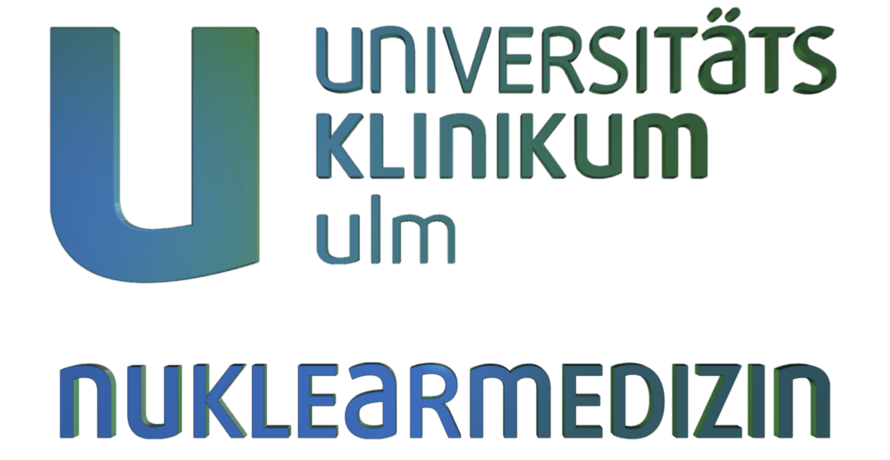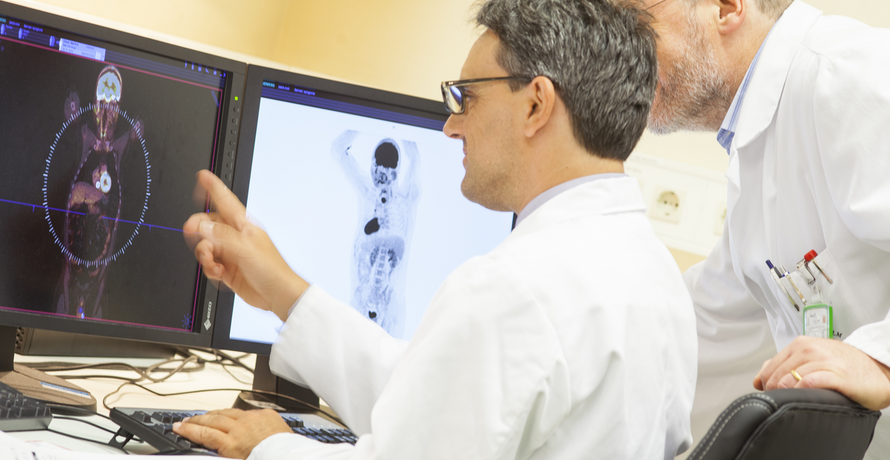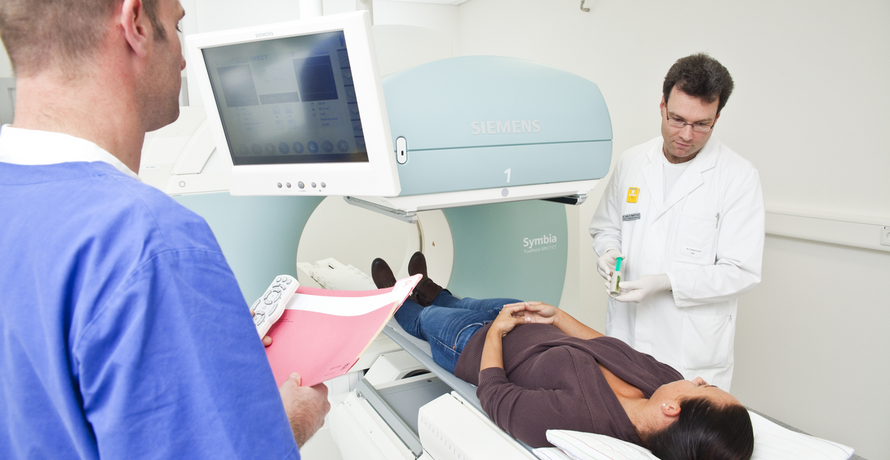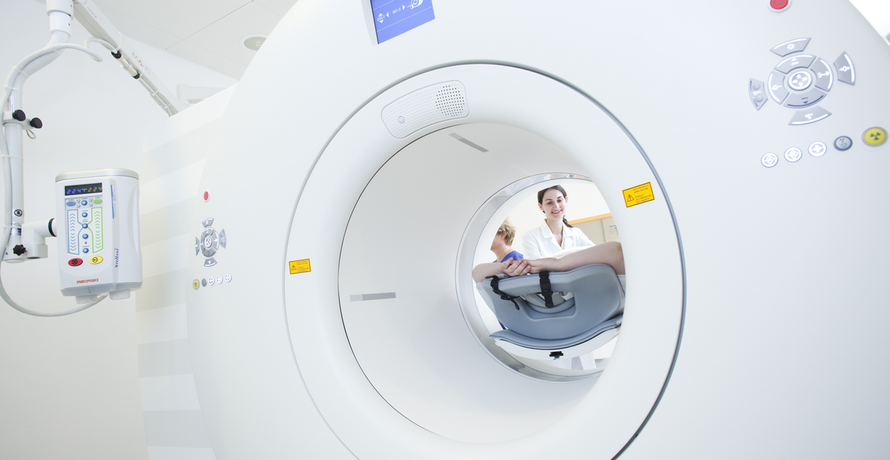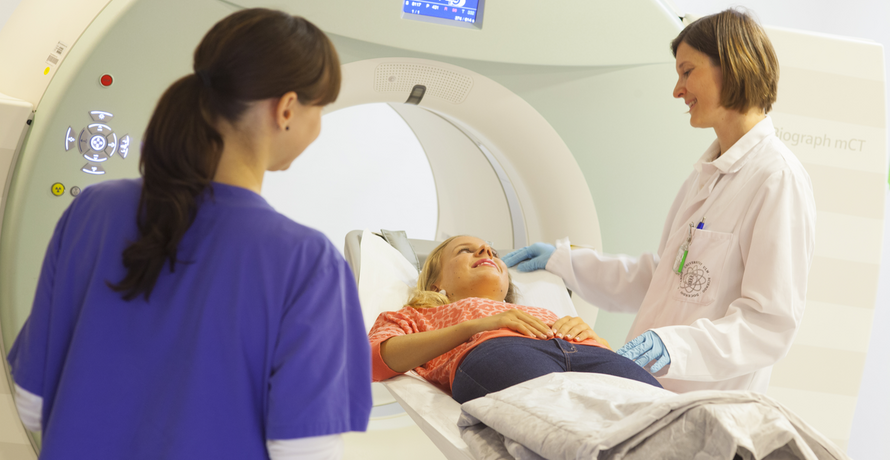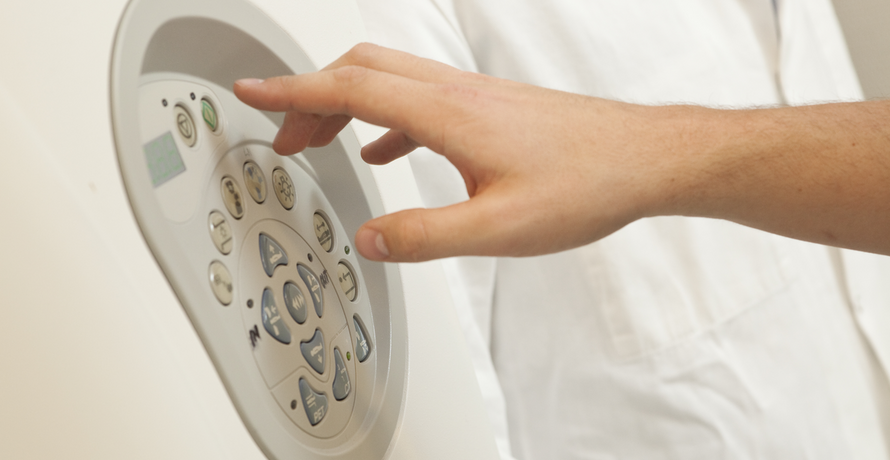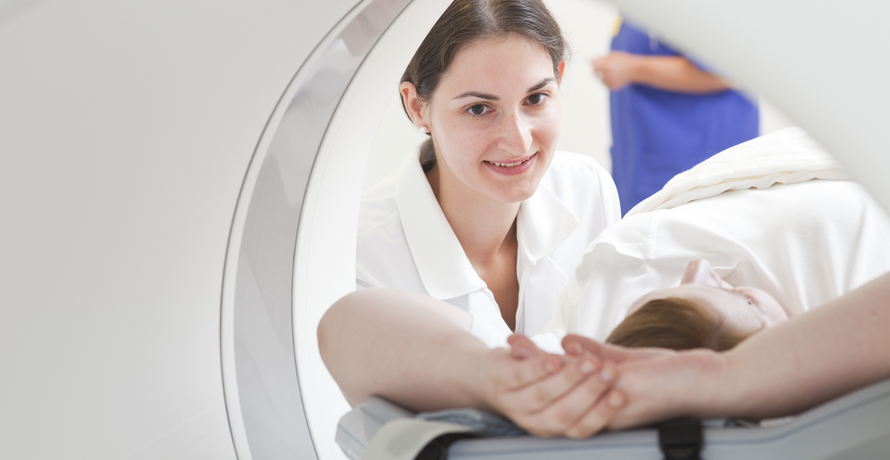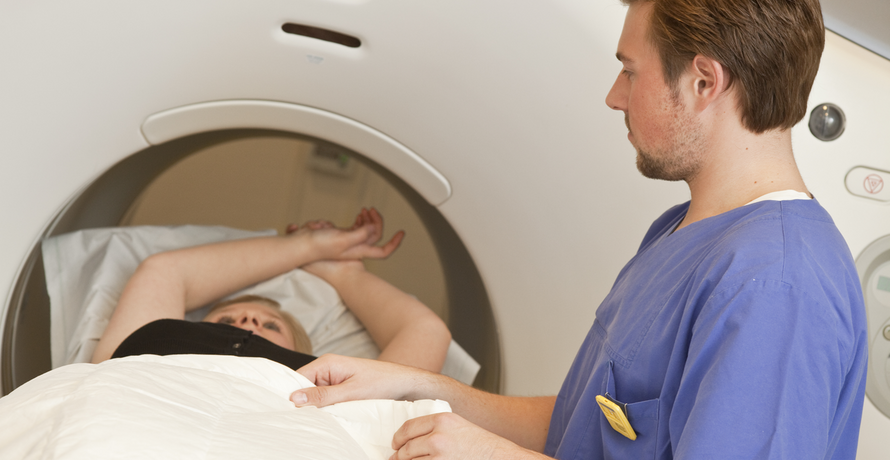Diagnostics in nuclear medicine
Evaluation of disease-related functional disorders
The strength of nuclear medical diagnostics is the visualization and measurement of important body functions such as blood circulation, metabolism and the function of vital organs such as the brain, heart, kidneys, bones or vital hormone-producing glands such as the thyroid. Numerous tumor diseases can be detected on the basis of a increased nutrient consumption of the tumor cells and the entire body can be scanned for tumor foci in one examination.
For this purpose, you will be administered a very small amount of a low-dose radioactive medicine, but this will not pose any acute danger to you or the environment. In general, you will not experience any unpleasant side effects either, as the quantities of the substance used are extremely small.
The distribution in the body is then mapped using state-of-the-art measuring instruments. The techniques of so-called scintigraphy and positron emission tomography are available. Would you like to learn more about this?
We would be happy to explain more details under the corresponding sections "Scintigraphy and SPECT/CT" and "PET/CT".
PET/CT "combined positron emission tomography / computer tomography"
Multimodal imaging: more than the sum of its parts!
An important focus of our clinic is "multimodal imaging". In one device, the PET/CT, high-resolution computer tomographic (CT) sectional images are recorded, as well as the nuclear medical data of the PET. This optimally combines the strengths of modern sectional imaging - high-resolution organ imaging - and sensitive functional measurement and "fuses", i.e. superimposes them into a single image. We can also superimpose our PET/CT images with other examinations, such as an MRI (magnetic resonance imaging).
The advantage for you: maximum information and precise diagnostics in one examination. Would you like to make an appointment or get more information?
All contact details see top right.
PET/CT - how does it work?
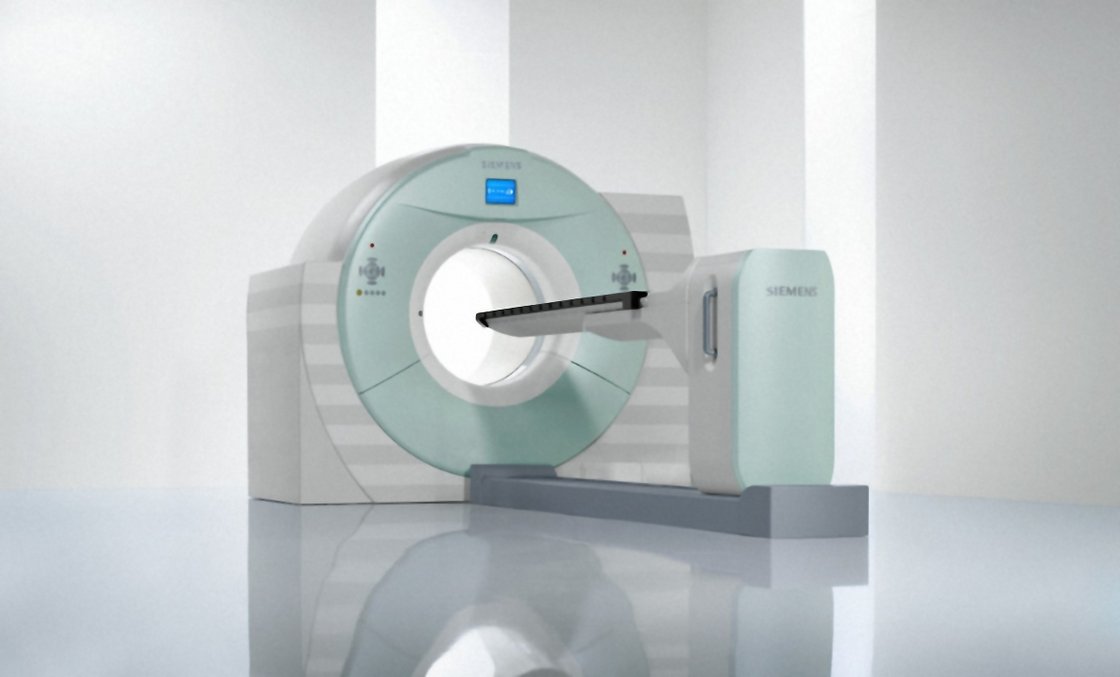
Positron emission tomography (PET) is an imaging technique that produces sectional images of living organisms by visualizing the distribution of weakly radioactively labeled substances (radiopharmaceuticals) in the organism and thus imaging biochemical and physiological functions ("functional" or "molecular" imaging). PET requires only very small amounts of radioactive drugs (only a few millionths of a gram!), so that practically no undesirable effects are to be expected.
PET/CT is used clinically for many tumor diseases, including lung tumors, lymph node cancer (malignant lymphomas), head and neck tumors, colon cancer, bone tumors, skin tumors (melanoma), or neuroendocrine tumors (NETs). One of our main focuses is PSMA-PET/CT in prostate carcinoma. In neurology, PET/CT is used, for example, in Alzheimer's disease and other neurodegenerative diseases. In cardiology, PET/CT can be helpful in determining the vitality of the heart muscle after severe circulatory disorders. PET/CT is also used to diagnose inflammation or to assess the stability of prostheses, as in hip TEP.
We produce the radioactive drugs for PET/CT, the so-called "tracers", for you in our own laboratory for radiopharmacy. For your protection, strict quality criteria apply, as in the pharmaceutical industry for the production of pharmaceuticals (so-called GMP criteria, which stands for "good manufacturing practice").
We routinely offer the following substances for PET/CT examination:
- [18F] FDG (tumors, inflammation, dementia)
- [68Ga] and [18F] PSMA-Ligand (Prostate carcinoma)
- [68Ga] DOTA-i-TATE (neuroendocrine tumors, meningeomas)
- [11C] PIB (Detection of amyloid deposits in dementia)
- [11C] Methionin (amino acid metabolism, parathyroid gland, brain tumors)
Scintigraphy | SPECT | SPECT/CT
Scintigraphy is an imaging technique that uses very small amounts of radioactive drugs to visualize specific organ functions and metabolic pathways. For this purpose, the distribution of the administered radioactive drugs is measured with special measuring devices, so-called gamma cameras, and precisely evaluated. In addition, gamma camera/CT combination devices can be used to produce sectional images of the radioactivity distribution for diagnostic purposes. This new technique combines anatomically high-resolution slice images with the function-specific molecular imaging of radioactive drugs in an advantageous way. Would you like to make an appointment for an examination or find out more from us?
Please contact us, we are happy to advise you!
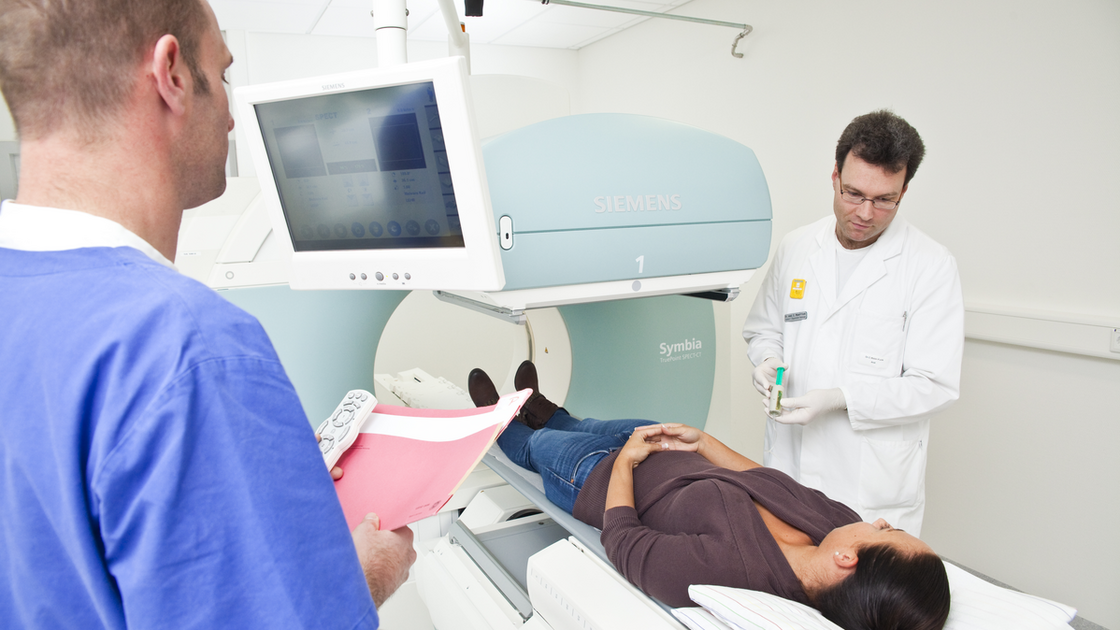
SPECT/CT camera: The superposition of functional imaging with the anatomical image information of computed tomography enables precise and comprehensive diagnostics
Scintigraphy in planar technique, layer technique (SPECT) or fusion imaging technique (SPECT/CT) is often used to examine the skeletal system, e.g. in the case of bone metastases, but also, among other things, in sentinel lymph node scintigraphy (SLN scintigraphy), in examinations of kidney function or blood flow to the heart muscle and in a large number of other organ function tests.
Thyroid gland outpatient clinic
We offer all procedures for thyroid diagnostics. Usually, an ultrasound examination (sonography) and a blood test are performed. If necessary, a thyroid scintigram or fine needle puncture can also be done. In addition, the most modern sectional imaging procedures such as SPECT/CT and PET/CT are available for further examinations. A radioiodine test is carried out before any radioiodine therapy at the clinic's therapy ward. This also includes a measurement after approx. 24 hours.
Patients with malignant thyroid disease are cared for under the auspices of the Comprehensive Cancer Center Ulm (CCCU). Treatment concepts are discussed together with experts from other disciplines and discussed individually for each patient so that the best individual therapy can be implemented.
Special consultation dates for a detailed medical consultation can be arranged. (see contact)
